#mobility walker for seniors
Explore tagged Tumblr posts
Text
How Mobility Walkers Improve Posture and Reduce Joint Pain in Seniors
As seniors age, maintaining good posture and managing joint pain become crucial for overall well-being. Mobility walkers are an excellent tool to support both, offering improved posture, reduced joint pain, and enhanced stability. Here's how:
1. Improved Posture
Mobility walkers for seniors provide support that encourages to stand upright, reducing the tendency to hunch over. This helps align the spine and prevents discomfort in the back, neck, and shoulders caused by poor posture.
2. Joint Pain Relief
Walkers help redistribute body weight, relieving pressure on the hips, knees, and ankles. This provides comfort for seniors with conditions like arthritis, allowing them to move more freely and reduce joint strain.
3. Natural Walking Gait
Walkers promote a more natural walking pattern by ensuring even weight distribution, which reduces the strain on different muscles and joints and prevents discomfort from abnormal walking habits.
4. Enhanced Stability
By improving balance, mobility walkers reduce the risk of falls, which in turn prevents injuries that could exacerbate joint pain or misalignment.
5. Encouraging Physical Activity
Walkers allow seniors to stay active by making walking easier and less painful, promoting joint health and muscle strength through regular movement.
Conclusion: Simons’ Mobility Walker for Seniors
For seniors looking to improve posture and reduce joint pain, Simon’s- mobility walker for seniors is an ideal choice. Designed for comfort and stability, it offers the support needed to move confidently and pain-free.
#mobility walker for seniors#careproducts#elderly care items#seniorcareproducts#seniorcare#eldercare#walker
0 notes
Text
The Disabled Traveler’s Guide to Black Canyon of the Gunnison National Park

View On WordPress
#Accessible Travel#Black Canyon of the Gunnison NP#Colorado#Disability#Disabled#Disabled Traveler#Handicapped#Limited Mobility#National Parks#Road Trip#Seniors#Slow Walker#Travel#Wheelchair Users
2 notes
·
View notes
Text
Buy Adult Walker & Rollators for Senior Citizens
A rollator walker is a mobility device that assists, balances and facilitates movement in persons with limited mobility. It is different from a standard walker because it has wheels, a seating option, and handbrakes, making it convenient to use both indoors and outdoors.
With light frames and adjustable handles, rollator walkers provide convenience and comfort to users of all ages. The seat incorporated into the walker enables users to take quick rests easily, and with the added storage pouch, carrying personal items becomes convenient. A rollator walker can facilitate safe and independent movement for those recovering from injury or requiring additional assistance with activity.
#rollator walker#rollators#mobility rollators#mobility walkers#mobility walkers for senior citizens#freedom mobility scooters#freedom mobility#mobility scooters
0 notes
Text
#Buy Walkers & Rollators Online#Best Mobility Walkers for Seniors#Affordable Rollators with Seats#Lightweight Folding Walkers#Heavy-Duty Rollators for Adults#Compact & Portable Walkers#Adjustable Height Mobility Aids#Durable Walkers for Stability & Support#Rollators with Brakes & Storage#Top-Rated Walking Aids for Sale#Shop Medical Walkers for Elderly#Premium 4-Wheel Rollators Online
1 note
·
View note
Quote
The Benefits Of A Senior Using A Walker Walkers offer invaluable support for seniors, helping them maintain their independence, stability, and overall health. As aging brings natural changes to the body, many older adults find that their physical strength, balance, or mobility may decline over time. Using a walker can significantly improve their quality of life, offering them not only…
The Benefits Of A Senior Using A Walker
0 notes
Text
Mobility Equipment & Services for Every Budget
Finding the right mobility equipment can be a sport-changer for all of us needing extra guide of their every day life. But with such a lot of options to be had, it is able to be overwhelming to figure out what’s great for you—particularly while you're on a finances. The suitable information is that Best mobility gadget & services are available in a extensive variety of alternatives, ensuring that there’s something out there for anyone, irrespective of monetary constraints. In this weblog, we’ll explore how you can locate the suitable mobility answers without breaking the bank.
Understanding Your Needs
Before diving into the world of mobility equipment, it’s important to evaluate your unique wishes. Whether you’re seeking out a wheelchair, walker, scooter, or domestic changes, knowledge your daily challenges and lifestyle will manual your selections.
Ask yourself:
What sort of mobility help do I want most?
How frequently will I use this gadget?
Do I want some thing brief or long-term?
What features are vital for my comfort and independence?
Answering those questions will assist slender down your alternatives and ensure you invest in device that sincerely meets your wishes.
Exploring Budget-Friendly Mobility Equipment
1. Wheelchairs and Scooters
Wheelchairs and scooters are of the maximum common sorts of mobility equipment. They are available in quite a few styles, from simple manual models to greater advanced electric powered variations.
Manual Wheelchairs: These are commonly greater low-cost and can be discovered for as little as some hundred dollars. They’re ideal for those with top body strength and who most effective want occasional assistance.
Electric Wheelchairs: While pricier, many 2d-hand options are available, making them extra accessible. Look for refurbished fashions that have been cautiously inspected for exceptional.
Mobility Scooters: Scooters are a remarkable choice for folks who need to journey longer distances. Basic models can be quite cheap, and some stores offer financing options to make them extra reachable.
2. Walkers and Rollators
Walkers and rollators are superb for individuals who need a bit of greater support while strolling. They’re generally affordable, with primary fashions to be had at a low fee.
Standard Walkers: Basic walkers are simple and less expensive, normally priced underneath $100. They offer balance for those with stability problems.
Rollators: Rollators, which come with wheels and a seat, are barely extra luxurious but provide more mobility and luxury. They’re perfect for folks that need to transport round extra freely and take breaks while wanted.
three. Home Modifications
Making your home more available doesn’t have to be steeply-priced. There are lots of finances-pleasant changes you may make to enhance mobility and protection.
Grab Bars: Installing take hold of bars inside the toilet is a easy and cheaper way to save you falls.
Ramps: Portable ramps can be an less expensive answer for folks that need to navigate steps or uneven surfaces.
Stair Lifts: While stair lifts can be pricey, there are apartment and financing options to be had. Some organizations even provide presents to assist cowl the value.
4. Second-Hand and Refurbished Equipment
One of the quality ways to stay within budget is to explore 2nd-hand and refurbished mobility gadget. Many agencies focus on refurbishing used gadget, ensuring it’s secure and purposeful. Buying 2nd-hand can prevent a giant amount of cash whilst nevertheless presenting you with high-quality system.
Check neighborhood classifieds, online marketplaces, and specialized shops for second-hand offers. Just make sure to look into the device thoroughly or discuss with a professional to make certain it meets your desires.
Budget-Friendly Services
In addition to equipment, mobility equipment & services regularly consist of renovation, restore, and customization. These services are critical in making sure your gadget remains in top circumstance and continues to meet your wishes over the years.
1. Maintenance and Repairs
Regular preservation is vital for keeping your mobility device in appropriate working order. Many businesses provide cheap carrier plans that consist of recurring exams and repairs. Investing in a preservation plan can save you cash in the long run via preventing luxurious breakdowns.
2. Customization Services
Customization could make a international of difference in comfort and usability. Whether it’s including extra padding to a wheelchair or adjusting the peak of a walker, customization doesn’t ought to be highly-priced. Many vendors provide low priced customization services that may be tailor-made for your price range.
three. Rental Services
If you simplest want mobility system briefly, renting might be the maximum cost-powerful alternative. Many businesses provide rental offerings for wheelchairs, scooters, and other gadget. This may be particularly beneficial if you’re getting better from surgical procedure or best want assistance for a brief period.
Financial Assistance and Resources
If you’re worried about the fee of mobility gadget and services, don’t worry—there are sources to be had to assist. Many authorities programs, non-earnings groups, and charities offer monetary help or presents to assist cowl the price of mobility aids.
1. Government Programs
Check with your neighborhood government for packages that provide financial assistance for mobility device. In some instances, you could qualify for subsidies or grants to help cover the value.
2. Non-Profit Organizations
Several non-earnings companies offer assist to individuals in need of mobility device. They may additionally provide equipment at a discounted value or even without spending a dime, depending on your scenario.
three. Insurance Coverage
Some mobility equipment may be included by way of your medical insurance. Be sure to check with your company to look what’s protected to your plan.
Conclusion
Finding the proper mobility device doesn’t ought to be a disturbing or steeply-priced method. With a touch studies and making plans, you could discover fine mobility equipment & services that match your finances and meet your wishes. Whether you’re searching out a wheelchair, walker, scooter, or home modifications, there are masses of alternatives available to help you stay independently and easily.
Remember, making an investment in the right mobility device is an funding to your satisfactory of existence. By exploring price range-pleasant options and taking gain of available assets, you may locate the ideal solution without breaking the bank. So move in advance, start your search nowadays, and take step one towards more mobility and independence!
#mobility equipment & services#mobility scooters nz#walkers for seniors#wheelchair nz#disability equipment nz
0 notes
Text
Post-Pride Reflection as a Young Disabled Lesbian
CW: suicidal ideation
I, like many, grew up with what has been called a “sense of foreshortened future.” I was performing the version of myself that felt most likely to survive. She was lonely and miserable and burning out faster than I could reinvent her. My high school ex-boyfriend joked that it would be a miracle if I managed to avoid joining the 27 club.
I went to Pride for the first time when I was 16, still deeply afraid of my queerness. I convinced myself that I could still be safe and queer if I just chose to be with a man anyways. I imagined marriage as a finish line. Once I found a good, safe, moderately attractive husband, I wouldn’t have to fight anymore. My life would be over. I couldn’t wait.
I approached high school with a similar mentality. By senior year, I was convinced that there was nothing to live for once I’d proved to myself that I was strong enough to finish what I’d started and graduate. But there was a spark I couldn’t bury. This feeling from that pride festival that there were other people like me out there.
So I went to college and had the best year of my life before everything came crashing down again. Months of psychosis, seizures and a renewed depression. But that spark remained. I was encountering new forms of queerness every week on campus, learning more and more, being challenged everywhere; my confidence in my homophobic religion was crumbling quickly.
As I recovered and began to really experience my university, making friends and taking opportunities both academically and socially, I found myself on my way to South Korea for a one-year study abroad and as a last hurrah, I took a good friend of mine from high school to his first pride parade.
I was so full of joy I couldn’t contain it. I felt that same pull on my heart as I had years before at my first pride festival in that same city, on those same streets. All those times I ignored the ache in my chest reading gay fanfiction, hearing about gay love stories online, it was time for a final reckoning.
By the same time the following year I was in Korea at Seoul pride holding hands with a beautiful woman marching in the parade as an out and proud non-religious lesbian. The ache in my chest was no longer envy but impatience. Meeting my person, falling in love, saying yes and then “I do,” these things were no longer the long awaited end of my tragic story. They were the beginning to a joyful saga of adventure. And I was raring to go.
And then I got sick again.
I went from the healthiest and happiest I’d ever been, feeling fully and truly happy to be alive for the first time in my life, to uncertain if I'd live long enough to graduate, losing everything that I had found my joy in. I couldn’t go back to Korea, all my friends were moving away, I couldn’t work enough to live alone, and my PTSD had me on thin enough ice as it was, without having to move back in with my homophobic family. I fell back into the worst depression I’d ever experienced. It took months for me to admit to my friends how I was feeling, and confront the ablism and homophobia that had me believing I had no future.
Last weekend I attended my fourth pride festival. The third in the same city on the same streets I started on. I walked the festival looking hot as hell in my pink chrome walker carrying rescue medication with my best friend, a fiercely protective butch lesbian. As I watched the parade that morning, I finally let myself imagine a future beyond my education. I saw in the crowd queer women of all ages. Children, young adults like me, middle aged people with families, and most importantly to me, dozens of old women. Women with thin grey hair, wrinkles, shaky hands, orthopedic tennis shoes and mobility aids, wide smiles and brightly colored flags pinned to their clothes as they marched in the parade with their partners. I had never seen so many old lesbians in my life. And they all looked so happy. I had never imagined I could live to be so old and not regret having done it. Every single one of the women I saw in the parade was wearing her pride on her sleeve, and on her face, and in her gait; there was no mistaking it.
For the first time in my life I really allowed myself to feel a desire to grow old and grey and march slowly in a pride parade with my wrinkly old wife, proving to everyone who taught me to hide that I do belong. I have a future. I can live a full life and I will live it queer and disabled and both of those things will make it all the brighter.
Disabled people belong everywhere.
Queer people belong everywhere.
I am a disabled lesbian and that is a life worth living, even just to prove it can be done.
Someday, if it’s the only mark I ever make on the world, I hope I can be an older wiser lesbian, one face in the crowd of many, that shows a little girl what joy awaits her decades on in her journey and she too will pass that joy down the line to the next generation after her.
My future will be hard, perhaps even more than my past. My future may be short; I will likely get sicker and that’s okay. But every day I get is a chance to feel and spread this queer joy that I have and I’m beginning to hope those days are many.
#disability pride#portland pride#lesbian#young and disabled#queer friendship#lgbt pride#ptsd recovery#walker user#hope#queer joy#coming out journey#internalized ableism#pride festival#pride 2025#out and proud#deconstruction
5 notes
·
View notes
Text
My Time in A Rural Psych Ward
Background- I have schizophrenia, and I’ve been hospitalized a couple of times.
This unit is a floor of the regular hospital and you had to get admitted through the ER.
Unit was shared with elders who had dementia/Alzheimer’s with behavioral issues. Technically we had different halls for our rooms but that was it.
We were never allowed outside. Nurses would tell us that it was such a lovely day outside but we couldn’t go outside or even crack a window. This was because the hospital didn’t have a courtyard or anything, outside was literally on the sidewalk next to the road or the parking lot.
You weren’t allowed to smoke and you could only get 1 nicotine patch per day, this one didn’t affect me cause I don’t smoke but it was a really common source of frustration for other patients.
Visitors were allowed one day of the week for one hour. You had two phone calls per day, no more than 10 minutes per call. These times were right before breakfast and right after dinner, if you slept through phone time then you missed your chance.
I’m going to put more potentially triggering things below the cut. So don’t read if that would bother you.
Nurses threatened to send me to State hospital for every “defiant” act. Example- asking what meds were in the paper cup she handed me. Example 2- asking nurse to unlock the fridge before I took my meds, I wanted to take my meds with juice cause they tasted bad.
They also did skin checks which is common practice at psych hospitals but when I asked that the male nurse not do mine they said there was no one else so I should suck it up.
They didn’t let people bring your mobility aids because “they were a safety hazard”. If you couldn’t move without one you could have a transport chair. This basically meant you were stranded until a nurse/tech could move you.
Interestingly this rule wasn’t applied to the seniors. They could have their walkers and canes.
4 notes
·
View notes
Text
Biking is accessible movement
Biking is a very accessible mode of transportation and way to exercise, however I think a lot of people don't know that, since there are a lot of countries, who don't have the right infrastructure (which is sad). So, this post is me showing y'all how biking is very accessible.
I am writing this from the perspective of someone with mild chronic pain, so I don't know the ins and outs, I have just seen all these bikes around on the streets, because here in the Netherlands they are very prevelant. I do want to say that biking is far easier on my joints than walking, except the knees, even with my unmodified bike.
An accessability feature that is not the bike itself, but often seen in traffic are the signs for hard of hearing people, which can be attached to the back of the bike to let others know that the person won't respond to audible traffic cues and to be careful.

1. Not having the muscle mass or lung capacity for intense exercise
Electrical bikes used to be mostly associated with senior citizens, however in recent years it has become more popular with high schoolers, who have to bike long distances to school or adults, who don't want to arrive sweaty at work. They can either assist you or do the biking for you. Normal electric bikes can go up to 30 km/h, but the recently popular fatbike can go up to 60 km/h (which is a hazard and should be regulated, but I digress). Every bike type that follows after can be an eletric bike.


2. Needing back support
Of course not everyone can sit on a bike, whose seating gives no support and for those there are lying bikes. Though being able to get up and down from a pretty low seat, which is less.

3. Not having the balance for biking
One big thing with bikes is balancing, which is something I struggle with (shout out to physical therapy for helping with that). Once I'm on the bike it is easier for me, but I struggled a lot with getting on and off the bike for a while as well as balancing in general, so I had training wheels for a lot longer than most of my peers.
Luckily, there are a lot of options for people who have bad balance or for whom getting on and off a bike would be more of a struggle. A fatbike already makes for easier balance, however for more aid you have tricycles for adults, which are pretty common. And an extra wheel can also be put on a lying bike.


4. Mental disabilities that limit safe independence in traffic
Not everyone can be in traffic unsupervised due to mental disabilities or brain damage, so not everyone can bike on their own. However, there are many ways to bike while having someone there for safety.
A tandem might seem like a gimmick to some, but it can allow someone to bike without needing to take into account all the moving traffic. And the dubble bike, which is more often used as a fun thing for tourist to explore a city while being able to chat, can provide the same for those with bad balance. If the person in question is smaller than the person supervising, such as a child or little person, than there is also a bike attachment for any bike with a luggage carrier.
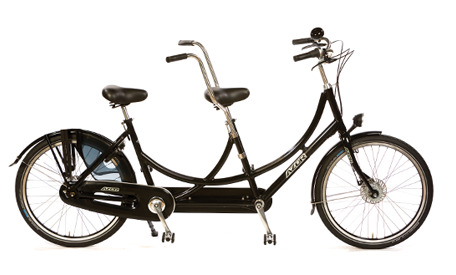
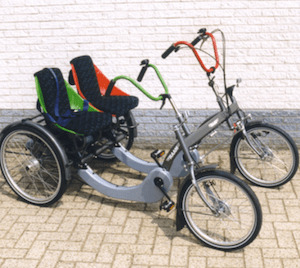

5. Using a mobility aid
A lot of people think that you can't bike when using a mobility aid, however biking is not the same as walking, so should your body allow it, biking is possible.
If a person uses a cane or crutches there are ways to hold them in place. A walker can also be attached to the back if it is foldable. If a person is in a wheelchair (depending on what kind) then a hand bike is an option, which allows for higher speeds than moving regularly, while not taking more energy. A person with a wheelchair can also be transported with a bike, if they are not able to move through traffic independently (i have been informed that this is for kids, so thank you for that addition).
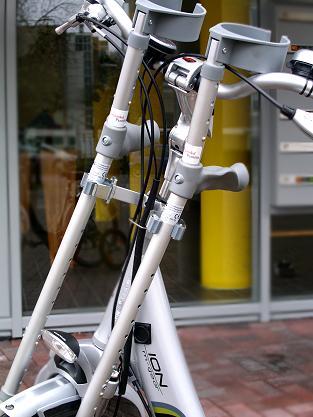

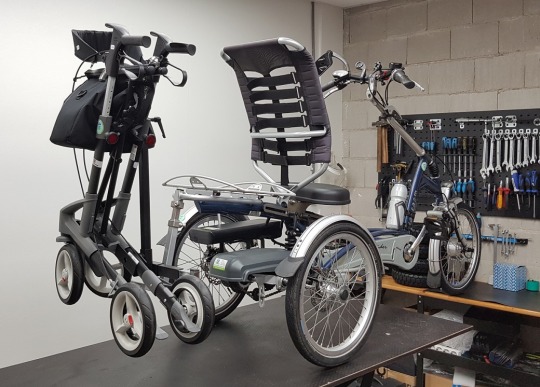
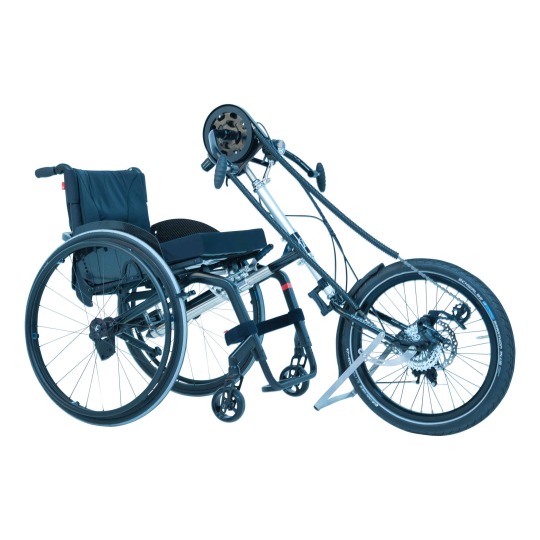
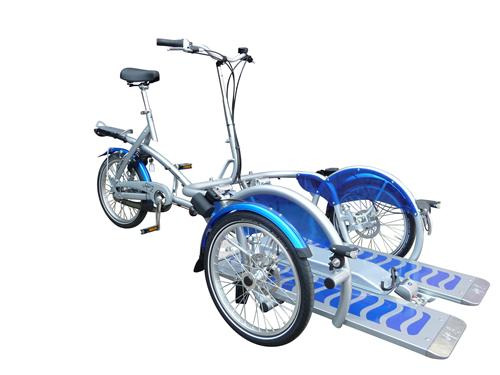
6. Lifestyle makes it more difficult to bike
Some people can ride a bike, but aren't able of biking, because they have kids, pets or need to move more stuff. However, there are ways to still use a bike in those circumstances. Popular among people in busy cities with more than one kid is a cargo bike. A cargo bike is also avaible with three wheels for extra balance and both can be electric. For pet owners the trailer is more popular, since a pet cannot jump out of it, though I've also seen plenty of babies and toddlers in them. Both these options can naturally also hold stuff.
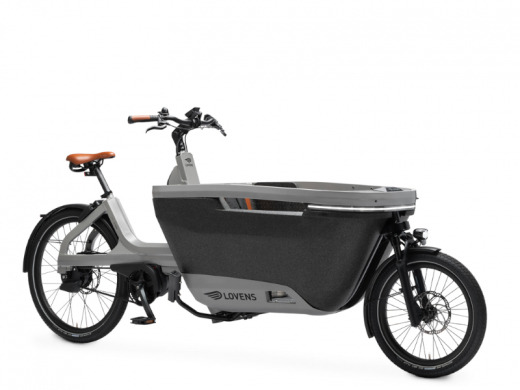
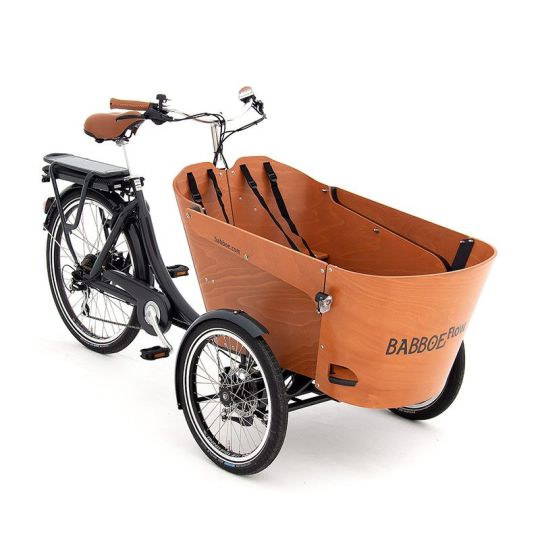
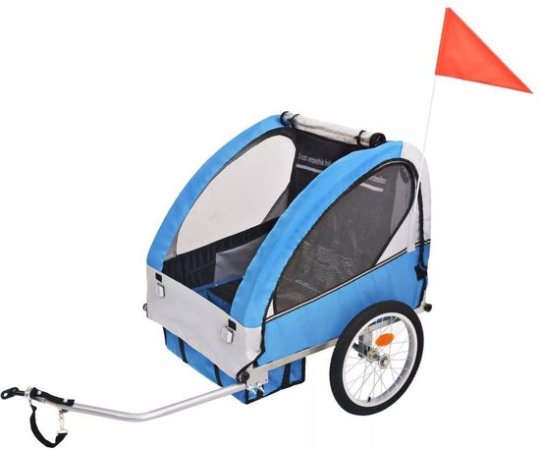
Of course I totally understand that not everyone is able to bike and that not everywhere there is the infrastructure necessary. I am just passionate about it and I think that a lot of people might not realize that biking can be more accessible than it is often portrayed. I might have missed something, so feel free to add if you find anything and I would love to hear thoughts or just reactions :D
#rrrambles#disability#disabled#disability rights#disability awareness#disabilities#mobility aid#accessibility#biking#bicycle#leftism#political#politics#accessabilty of biking#accessable exercise#accessable movement#disabled excercise#image description in alt#image described#image desc in alt text
74 notes
·
View notes
Text
Must-Have Walker Accessories for Seniors in 2025 🚶♂️💡
Mobility doesn’t mean compromising comfort or safety. In 2025, walker accessories have evolved to bring convenience, style, and independence to seniors.
Whether it's a sturdy cup holder, a soft storage pouch, or an LED safety light — the right accessories can make everyday life easier and more enjoyable.
💬 Top picks include: ✅ Cup holders for hydration on the go ✅ Glider skis for smoother movement ✅ Foldable trays for mealtime ease ✅ Handy baskets & bags for storage ✅ Safety lights for nighttime visibility
🧓💼 Ideal for elderly parents, caregivers, or anyone looking to improve mobility aid functionality.
👉 Explore the full list here: 🔗 https://safeelderlife.com/best-walker-accessories-for-seniors-2025/

2 notes
·
View notes
Text
What to Consider Before Purchasing a Mobility Walker for Your Elderly Loved One
When it comes to purchasing a mobility walker for an elderly loved one, it’s crucial to ensure that the chosen walker meets their specific needs. A well-selected walker can provide safety, comfort, and independence, allowing seniors to move around more easily and confidently. But with so many options on the market, how do you know which one is right for your loved one? In this blog, we’ll outline the essential factors to consider before purchasing a mobility walker for seniors, ensuring you make an informed choice that will enhance your loved one’s quality of life.
1. Type of Walker: Standard, Rollator, or Knee Walker?
There are several types of walkers, each designed to cater to different needs. The first step in choosing the right mobility walker is to understand the options available:
Standard Walker: This basic walker offers support and stability, making it ideal for seniors who need help with balance and standing but can walk without assistance.
Rollator Walker: Equipped with wheels, a rollator walker is great for seniors who need more mobility and speed. It also often includes a seat, providing a place to rest when needed.
Knee Walker: Designed for seniors recovering from foot surgery or injury, a knee walker is ideal for those who need to rest one leg while still being able to move.
Consider your loved one’s level of mobility and independence before making a decision. A rollator might be a good fit for someone who wants more mobility, while a standard walker could work for someone who needs a bit more stability.
2. Weight and Portability
It’s important to choose a walker that is lightweight and easy to maneuver. Heavy walkers may be difficult for seniors to lift or move, particularly if they need to lift it when transitioning between rooms or entering and exiting a vehicle.
3. Adjustability and Custom Fit
Every senior has unique needs, so it’s important to find a walker that can be adjusted for comfort and fit. Look for walkers that have adjustable height settings to accommodate your loved one’s size and ensure they’re walking at a comfortable height, reducing strain on their back, hips, and knees.
The handles should be set at a height that allows the senior to maintain an upright posture, helping avoid unnecessary pressure on the joints and promoting proper walking form.
4. Comfort and Ergonomics
Since your loved one will be using the walker frequently, comfort is a key consideration. Many mobility walkers come with padded handles and seats for additional comfort. If your loved one plans to use the walker for extended periods, choose one with features like cushioned grips, backrests, or a built-in seat for resting.
Additionally, consider a walker that’s designed to be ergonomic, allowing the senior to grip the handles easily without straining their hands or wrists. Non-slip handles can also prevent discomfort and provide extra grip for better control.
5. Safety Features
Safety should always be a top priority when purchasing a mobility walker for an elderly loved one. Look for walkers with non-slip feet to prevent accidental slips or falls. Brakes are also essential on rollator walkers, allowing seniors to stop safely when needed. These features provide peace of mind and ensure that the walker will offer a stable, secure experience.
If your loved one is prone to falling or has poor balance, you might want to choose a walker with a built-in seat or backrest for added support.
6. Ease of Use
A walker should be easy to maneuver for your elderly loved one. The walker’s design should enable easy movement, whether they’re walking indoors or outdoors. Check for walkers that provide smooth, quiet movement, and those with easy-to-operate brakes or locking mechanisms.
7. Budget and Warranty
Mobility walkers come in a range of price points, so it’s important to consider your budget while also keeping in mind the long-term value. Higher-end walkers may offer more advanced features, but there are also affordable options that provide the necessary support and comfort.
Additionally, check for any warranties or guarantees offered by the manufacturer. A good warranty ensures that the walker is a reliable investment, and you can replace it if needed.
Conclusion
Choosing the right mobility walker for your elderly loved one can be a life-changing decision. By considering factors like type, weight, adjustability, comfort, safety, and terrain, you can select a walker that helps them move more independently and confidently.
For a walker that offers outstanding quality, comfort, and durability, Simons – Mobility Walker for Seniors is a perfect choice. With a range of features designed to enhance stability and ease of use, Simons walkers provide everything your loved one needs for a safer, more independent lifestyle. Invest in their mobility today and see the difference it can make!
#Mobility Walker for Seniors#mobility walkers#careproducts#elderly care items#seniorcareproducts#eldercare#seniorcare
0 notes
Text
The Disabled Traveler's Guide to Arches National Park

View On WordPress
#Accessible Travel#Arches national Park#Disability#Disabled#Disabled Traveler#Handicapped#Limited Mobility#National Parks#Road Trip#Seniors#Slow Walker#Travel#Utah#Wheelchair Users
1 note
·
View note
Text
Senior Independence: Empowering Older Adults to Live Life on Their Terms
As we age, we often face challenges related to maintaining our independence. However, achieving and preserving senior independence is not only possible but essential for the well-being of older adults. Senior independence allows individuals to live a fulfilling life, make decisions on their own, and maintain dignity and self-respect. At Senior and Living Today, we are committed to offering the information, resources, and support necessary to help seniors live independently and confidently.
In this blog post, we’ll explore the importance of senior independence and share practical tips for promoting self-sufficiency, enhancing quality of life, and staying active in later years.
Why Senior Independence Matters
For many seniors, independence represents more than just the ability to live alone. It embodies autonomy, self-respect, and the power to shape one’s own life. Independence can have several profound benefits, including:
Physical and Emotional Health: Seniors who maintain independence are often healthier, both physically and emotionally. Staying active, managing daily tasks, and making personal decisions can help improve mental sharpness, reduce stress, and increase happiness.
Quality of Life: Being independent allows seniors to live life on their own terms. Whether it’s choosing when to go for a walk, deciding what to eat, or maintaining personal hobbies, independence gives seniors the freedom to keep doing the things they love.
Reduced Dependence on Caregivers: While many seniors will eventually need some form of caregiving support, maintaining independence as long as possible can reduce the burden on family members or professional caregivers. It also gives seniors a sense of pride and accomplishment in managing their daily routines.
Tips for Enhancing Senior Independence
Here are some practical strategies and tips that can help seniors maintain and improve their independence as they age:
1. Create a Safe and Accessible Home Environment
Safety is paramount to maintaining independence. Home modifications such as grab bars in bathrooms, better lighting, and eliminating tripping hazards can make it easier for seniors to navigate their homes without risk. Investing in assistive devices like walkers or stairlifts can also ensure that seniors can safely perform daily tasks and reduce the likelihood of falls.
2. Stay Active and Engage in Regular Exercise
Physical activity plays a key role in maintaining independence. Regular exercise, tailored to a senior’s abilities, helps improve strength, balance, and flexibility—vital components of staying mobile and avoiding injuries. Activities like walking, swimming, or joining a senior fitness class can also boost mental health and help prevent chronic conditions.
3. Plan for Healthcare Needs
Seniors should stay proactive in managing their healthcare. Regular check-ups, taking prescribed medications correctly, and addressing health concerns promptly can prevent conditions from worsening and help seniors stay independent for longer. Additionally, having access to telemedicine services can make it easier for seniors to manage their health from the comfort of their homes.
4. Explore Transportation Options
As driving may become less feasible with age, finding alternative transportation solutions is important. Public transportation, ride-sharing services, or senior transportation programs can help seniors stay mobile and access the community, social activities, and healthcare services without relying on others.
5. Maintain Social Connections
Isolation can be one of the biggest challenges to senior independence. Staying socially engaged improves both mental and emotional well-being. Seniors should consider joining social clubs, participating in community events, or connecting virtually with friends and family. Being part of a social network helps seniors stay informed, active, and connected.
6. Financial Planning for Independence
Financial security is a key part of being independent. Seniors should take steps to ensure that they have the financial resources to maintain their lifestyle. This includes planning for retirement, managing healthcare costs, and considering long-term care insurance options. Consulting with a financial advisor can help create a sustainable financial plan for the future.
7. Mindful Nutrition
Proper nutrition plays a critical role in maintaining independence. Seniors should aim for a balanced diet that includes a variety of healthy foods to maintain energy, prevent illness, and support overall health. Easy-to-make meals, meal delivery services, or meal prep assistance can help seniors who struggle with grocery shopping or cooking.
When Help is Needed: Assisted Living and Home Care Options
While the goal is to promote independence, there may come a time when professional assistance is needed to ensure safety and well-being. In such cases, seniors can explore options like home care services or assisted living communities that provide the right level of support, allowing them to retain as much independence as possible while still getting the care they need.
Home care allows seniors to receive assistance with activities of daily living (ADLs) such as dressing, bathing, and meal preparation while staying in their homes. Assisted living communities, on the other hand, offer a combination of independent living with on-site assistance, providing a balance of autonomy and support.
Finding the Right Support
Choosing the right care option is a deeply personal decision and should be based on individual needs, preferences, and lifestyle. At Senior and Living Today, we offer helpful resources to guide you through the decision-making process. Whether it’s finding a trusted caregiver or exploring different types of senior housing, we’re here to help.
Conclusion
Senior independence is about empowering older adults to live life on their own terms, maintain dignity, and continue enjoying all the things that make life meaningful. While challenges may arise as we age, it’s possible to stay independent with the right resources, strategies, and support. At Senior and Living Today, we are committed to providing the tools and information you need to make informed decisions and live your best life.
If you're interested in learning more about senior independence, caregiving options, or other resources for aging well, explore our website today. Together, we can help seniors lead happy, healthy, and independent lives.
#Senior independence#Over 50#Over 60#Senior planning#Caregiver#Caregiving#Senior housing#Senior authority
2 notes
·
View notes
Text
I am a mature PCA/caregiver who provides private duty care to the senior/aging population in the Raleigh-Durham area. I have a recent negative TB test, CPR certified, auto liability insurance, reliable transportation, no criminal history, and references.
I work in Wake, Durham, Orange, and Chatham counties only.
My experience:
*Memory care (e.g., dementia, Alzheimer's)
*Hospice/end of life care
*Diabetes care
*Transitional care
*Respite care
*Overnight care
*Hospital sitter
My duties/responsibilities:
*Personal Care: Bathing, toileting, dressing, grooming, and feeding.
*Companion Care: Activities (indoor & outdoor); accompanying on outings and appointments; errands (grocery store, pharmacy).
*Mobility/Ambulation Care: Help with getting in/out of the shower, bed, or chair; assists with walking with/without a walker or rollator; helps with fall prevention measures.
*Medication/Appointment Reminders: Helps monitor blood sugar, blood pressure, and heart rate; helps with appointment, birthday, and bill paying reminders; ensure that meds are taken at the appropriate times.
*Light Housekeeping/Chores: Prepares meals; cleans dishes/kitchen, laundry, vacuum/mop, dust, makes beds, retrieves mail, answers telephone/door, waters plants.
Why pay for the expensive upcharges charged by franchises? Why bother with the constant revolving door of caregivers going in and out of your loved one's home?
Contact me today to learn how my caring and compassionate in-home care services can help provide stability, as well as alleviate the stress and frustration associated with caring for your senior loved one.
Please reply to this post, send an email or call/text me for a confidential interview.
Sincerely,
Tracie
#senior care#senior caregiver#caregiver for seniors#home care for senior raleigh#home care for senior triangle
2 notes
·
View notes
Text
0 notes
Text
Walker Revolution: How Modern Mobility Solutions is Transforming Lives
In a world where mobility is often taken for granted, the humble walker is emerging as a game-changer for many. No longer just a tool for the elderly, walkers have evolved into sophisticated mobility aids that offer independence and freedom to a wide range of users.
Lets explore how modern Best walker NZ are redefining mobility and enhancing lives.
The Evolution of Walkers
Walkers have come a long way from their traditional designs. Initially seen as basic support devices, todays walkers incorporate advanced features and technology to cater to diverse needs. Modern walkers are not just about providing support; theyre about offering comfort, convenience, and style.
From Basic to Brilliant: The Design Evolution
Early walkers were simple frame structures with minimal padding and no additional features. Todays models boast ergonomic designs, adjustable heights, and padded seats. They come equipped with built-in brakes, baskets for carrying items, and even foldable frames for easy storage and transport. The focus is now on creating walkers that are as user-friendly and versatile as possible.
Technology Meets Mobility: Smart Walkers
In the age of technology, its no surprise that walkers are getting smart. New innovations include walkers with integrated GPS systems, automatic braking mechanisms, and even sensors that alert users to potential hazards. These high-tech features not only enhance safety but also make mobility aids more adaptable to various environments, from urban streets to rural paths.

Style and Functionality: Walkers That Make a Statement
Gone are the days when walkers were purely functional and not very stylish. Todays designs are sleek and modern, with a range of colors and finishes that cater to individual tastes. Whether you prefer a classic look or a contemporary design, theres a walker that complements your style while providing the support you need.
The Impact of Walkers on Everyday Life
The benefits of modern walkers extend beyond physical support. They play a crucial role in improving quality of life and fostering independence.
Enhancing Mobility and Independence
For many, walkers provide the freedom to move around more confidently. Whether its a stroll in the park, a visit to the grocery store, or simply navigating around the home, walker NZ enable users to maintain their independence and engage in daily activities with ease.
Boosting Confidence and Social Interaction
Using a walker can significantly boost confidence, reducing the fear of falls and accidents. This newfound confidence encourages users to participate more actively in social events and activities, leading to improved mental and emotional well-being.
Supporting Rehabilitation and Recovery
Walkers are also essential tools in rehabilitation and recovery. They offer the necessary support for individuals recovering from surgery or injury, allowing them to gradually regain strength and mobility. The adjustable features of modern walkers ensure that they can be tailored to the specific needs of each user during their recovery process.
Choosing the Right Walker for Your Needs
Selecting the right walker involves considering various factors to ensure it meets your specific requirements. Here are a few tips to guide your choice:
Assess Your Needs
Determine the level of support and stability you require. If you need a walker primarily for indoor use, a lightweight model with a basic design may be sufficient. For outdoor use, look for walkers with robust wheels and additional features like baskets or cup holders.
Consider Adjustability and Comfort
Choose a walker with adjustable height settings and comfortable handles. This ensures that the walker can be customised to fit your body and provide optimal support.
Evaluate Additional Features
Think about any extra features that might be beneficial, such as built-in brakes, seat cushions, or storage options. These features can enhance your overall experience and make using the walker more convenient.
Embracing the Future of Mobility
As we move forward, the role of walkers in our lives will continue to evolve. With advancements in design and technology, walkers are not just supporting mobility but also enhancing the quality of life for users. Embracing these innovations means embracing a future where independence and freedom are accessible to everyone.
Final Thoughts
So, whether youre considering a walker NZ for yourself or a loved one, know that youre investing in a tool that combines functionality with style, and tradition with technology. The walker revolution is here, and its transforming lives, one step at a time.
#mobility scooters nz#wheelchair nz#mobility equipment & services#walkers for seniors#electric mobility scooter#disability equipment nz#walker nz
0 notes